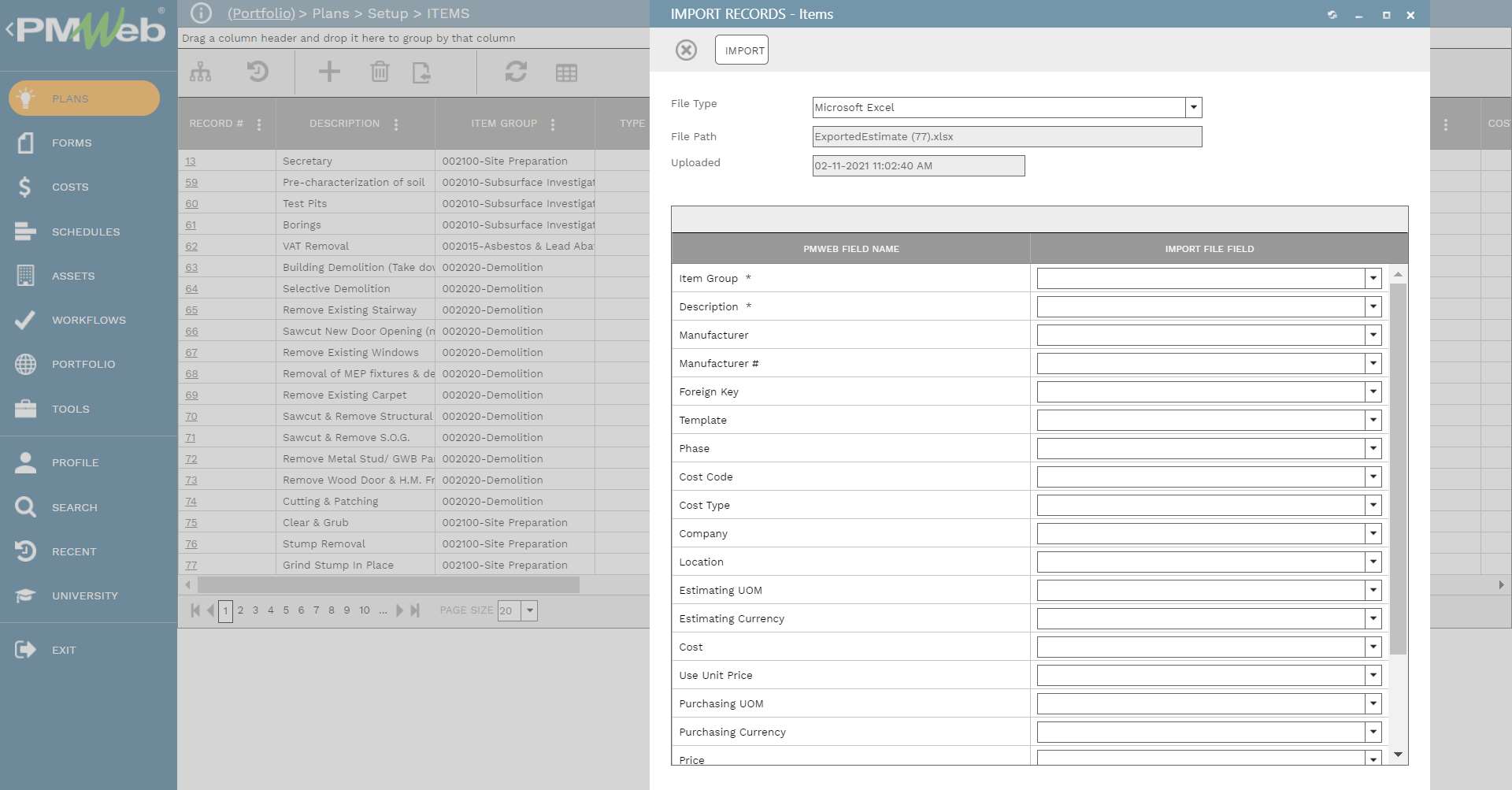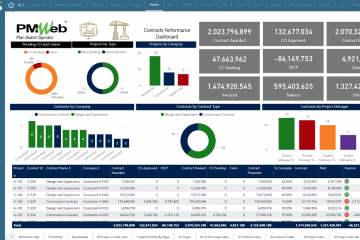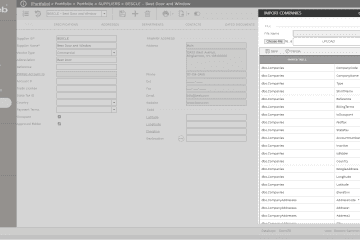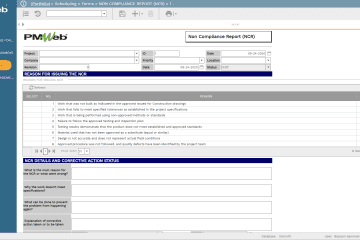Having a reliable, accurate and current cost database is a must requirement for having an accurate project cost estimate which is the basis for setting the project budget, preparing the project feasibility study, securing needed project funding, and assessing procured commitment contracts. Unlike the detailed cost database used by contractors, for project owners, the cost database needs to be based on parametric estimating and enable adopting progress elaboration as the project’s scope gets developed during the design stages. For a project owner, the lowest level of detail will be the bill of quantity level which will be used to procure contracts. Therefore, it is highly recommended that the cost database is structured around a progressive breakdown structure like the UniFormat™ or International Construction Measurement Standards (ICMS) numbering systems.
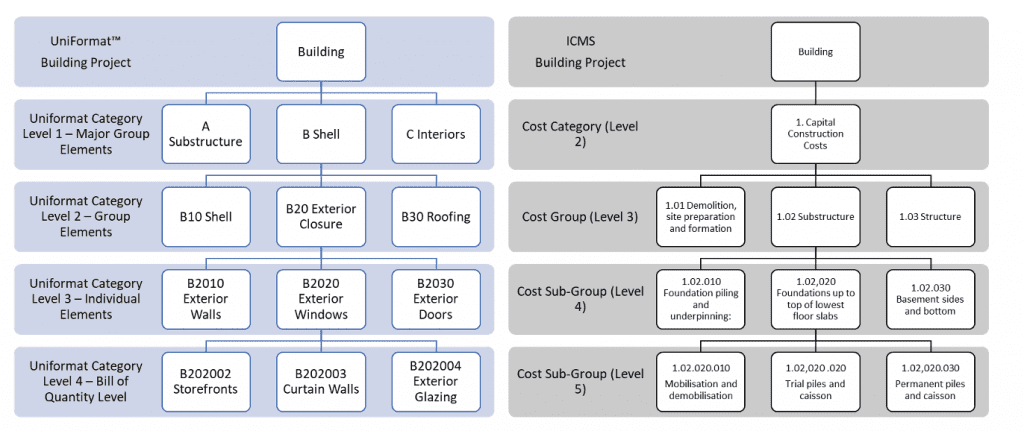
A Project Management Information Systems (PMIS) like PMWeb allows building the needed cost databases for project owners. It is recommended to have a separate cost database set for each type of project that the project owner builds. For example, there could be a set for buildings, infrastructure, and petrochemicals among other types of projects. Each project type has groups for the cost database level of details. For example, for the buildings, there will be four groups that will be aligned with the UniFormat™ four levels of details. Those will be Major Group Elements, Group Elements, Individual Elements, and Bill of Quantity Items.
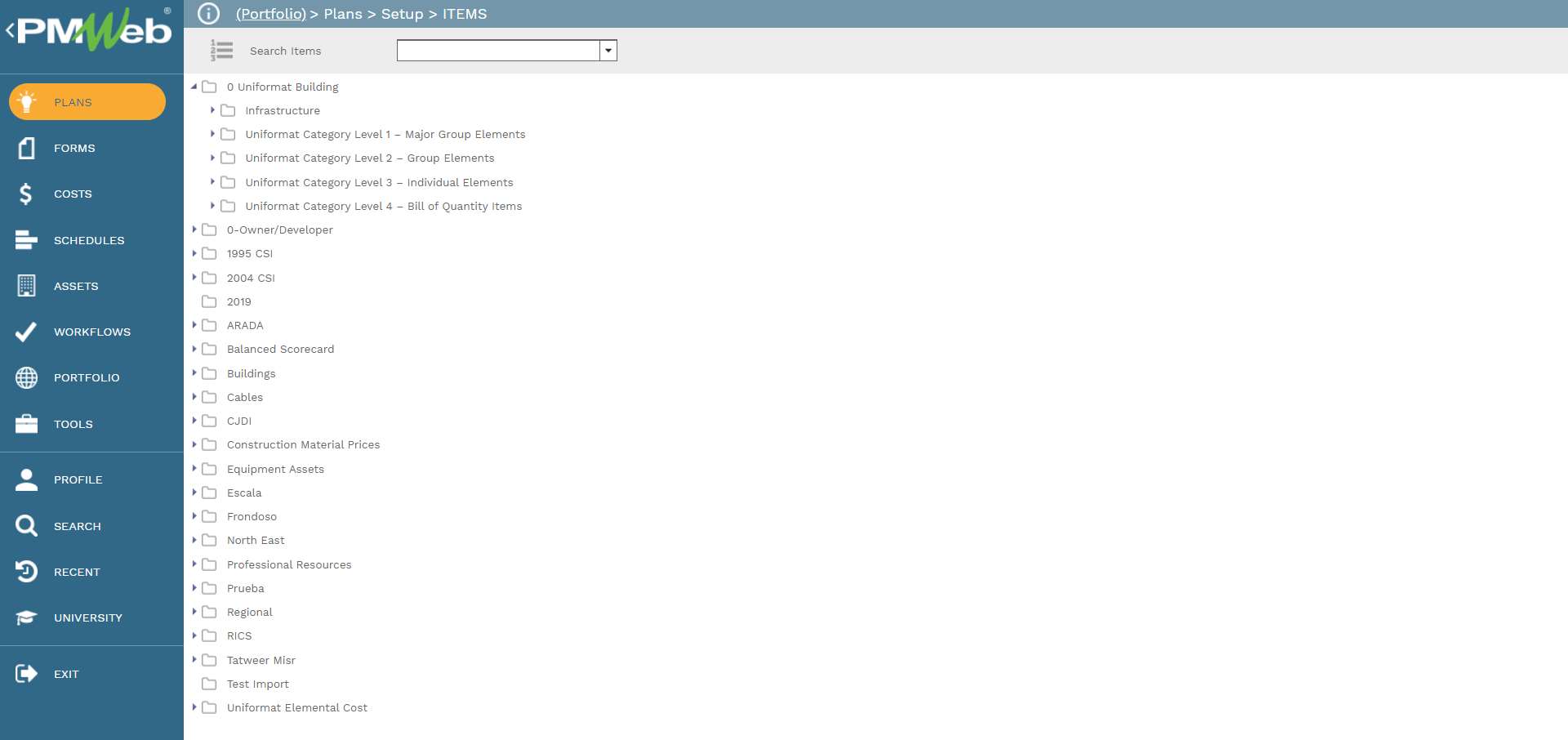
Each level includes the cost database items that belong to that group. For example, the level 1 group includes cost items for “A Substructure”, “B Shell”, “C Interiors” among others, whereas the level 2 group includes cost items for “A10 Foundation”, “A20 Basement Construction”, “A20 Basement Construction”, and “B10 Shell” among others. Further, the level 3 group includes cost items for “A1010 Standard Foundations”, “A1020 Special Foundations”, and “A1030 Slab-On-Grade”. “A2010 Basement Excavation” among others. The last level, the level 4 group, which is the level used in the bill of quantities includes cost items for “A101001 Wall Foundations”, “A101002 Column Foundations & Pile Caps”, “A101003 Dewatering”, “A102001 Pile Foundations”, “A102002 Caissons”, “A102003 Underpinning” among others.
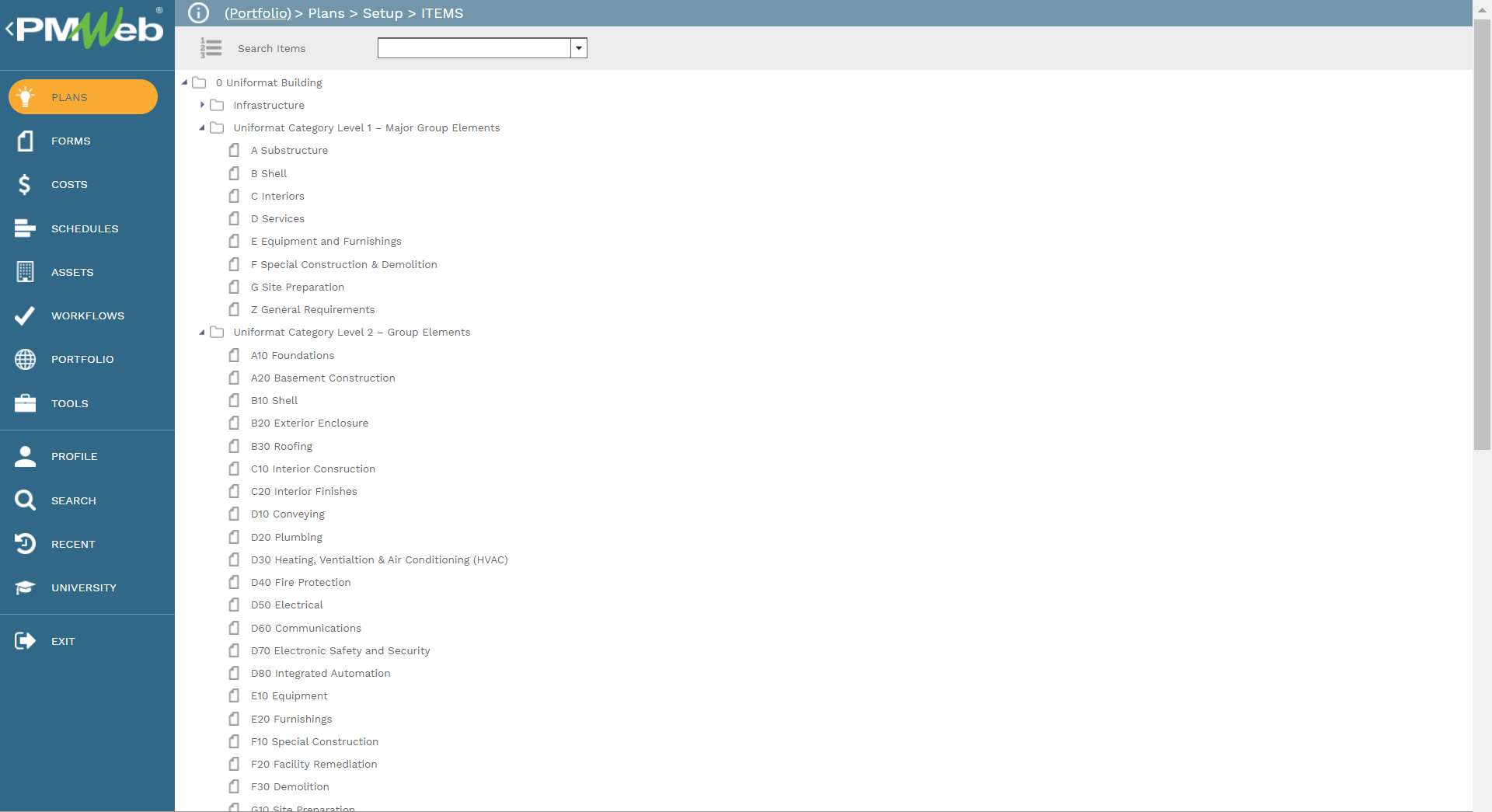
For each cost item regardless of which level group it belongs to, the minimum information that needs to be captured includes the cost item unit rate, unit of measure, and project template it belongs to (that is building, infrastructure, petrochemical, etc.) and the cost breakdown structure (of cost account) that is associated with the cost database item. The specification tab is also used to add additional user-defined fields that are not available by default in PMWeb.
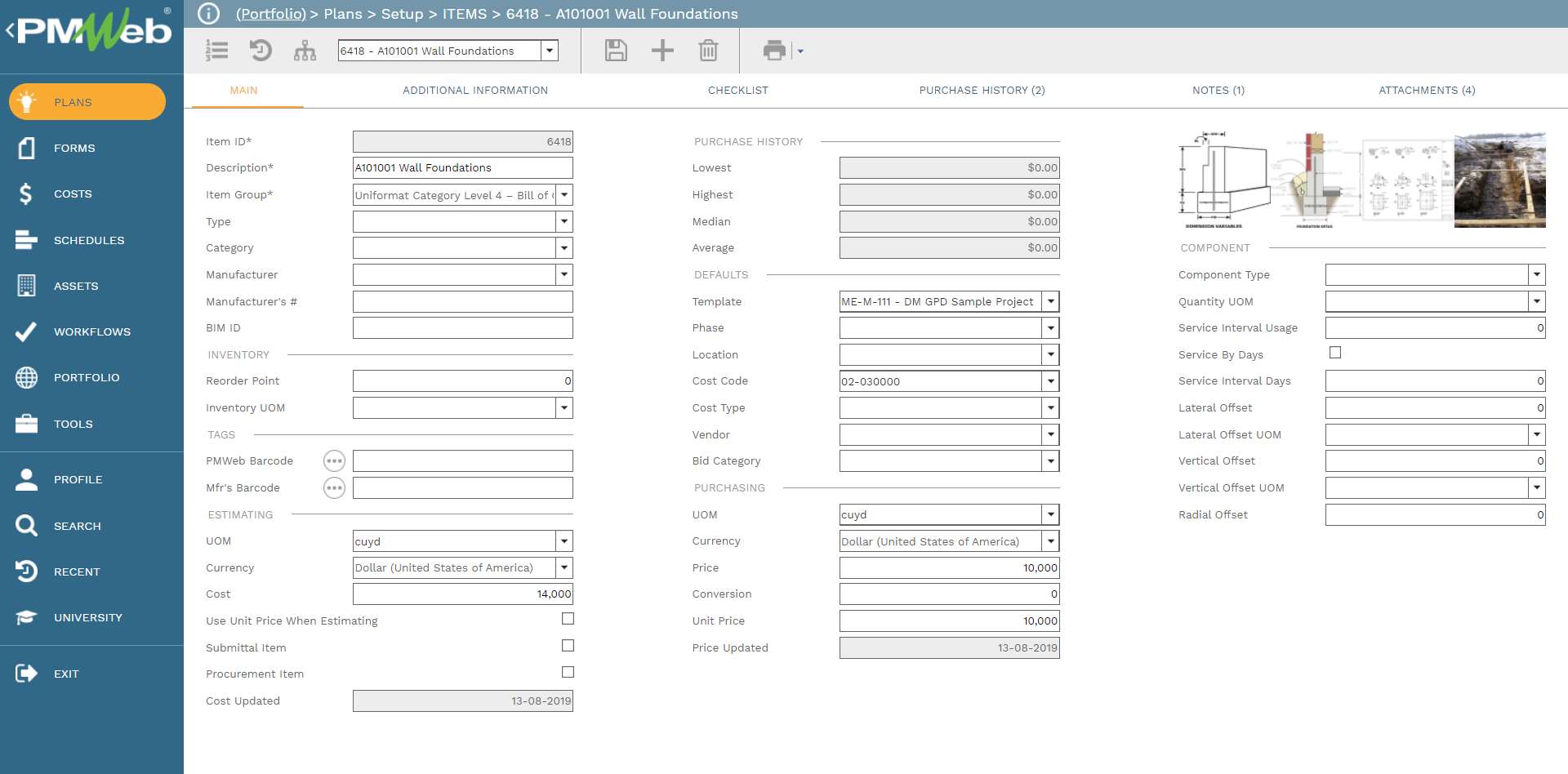
Like all PMWeb modules, the attachment tab allows attaching all documents that could be relevant to the cost item. Those could be product catalogs, drawings, official quotes, equipment catalogs, and specification sections, among others. For those attached items that need to be displayed on the cost item header, the option of “display” needs to be selected. It is highly recommended to have all those attached documents uploaded and stored into the PMWeb document management repository under their relevant folder.

For the level 4 group cost database items, which will be the cost items included in the bill of quantity, PMWeb provides details of previous actual unit price rates for similar cost items that were part of awarded commitments across the organization’s complete projects’ portfolio. For those previous cost items to be captured by PMWeb, the commitment lines must be created from the cost database by simply dragging and dropping those cost items. This ensures that the cost item description used in the commitment is the same as per the cost database. PMWeb highlights the lowest price in green, the median price in yellow, and the highest price in red.

The cost database items becomes the basis for creating the project cost estimates again by dragging the relevant cost database items to the cost estimate template. The project cost estimate could include cost database items from the different groups depending on the level of detail for the project’s scope of work. For example, at the 30% design development stage, the “A Substructure” and “B Shell” categories could be detailed at level 4, Bill of Quantity Level whereas “C Interiors” could be detailed at level 2, Group Elements. It should be noted that during the project’s design development stages, there will be new estimates that get created at each design stage taking into consideration the current project’s scope of work level of details. The project cost estimate becomes the basis for creating the cost estimates for the bid packages to be procured, comparing received bids, and creating the project budget.
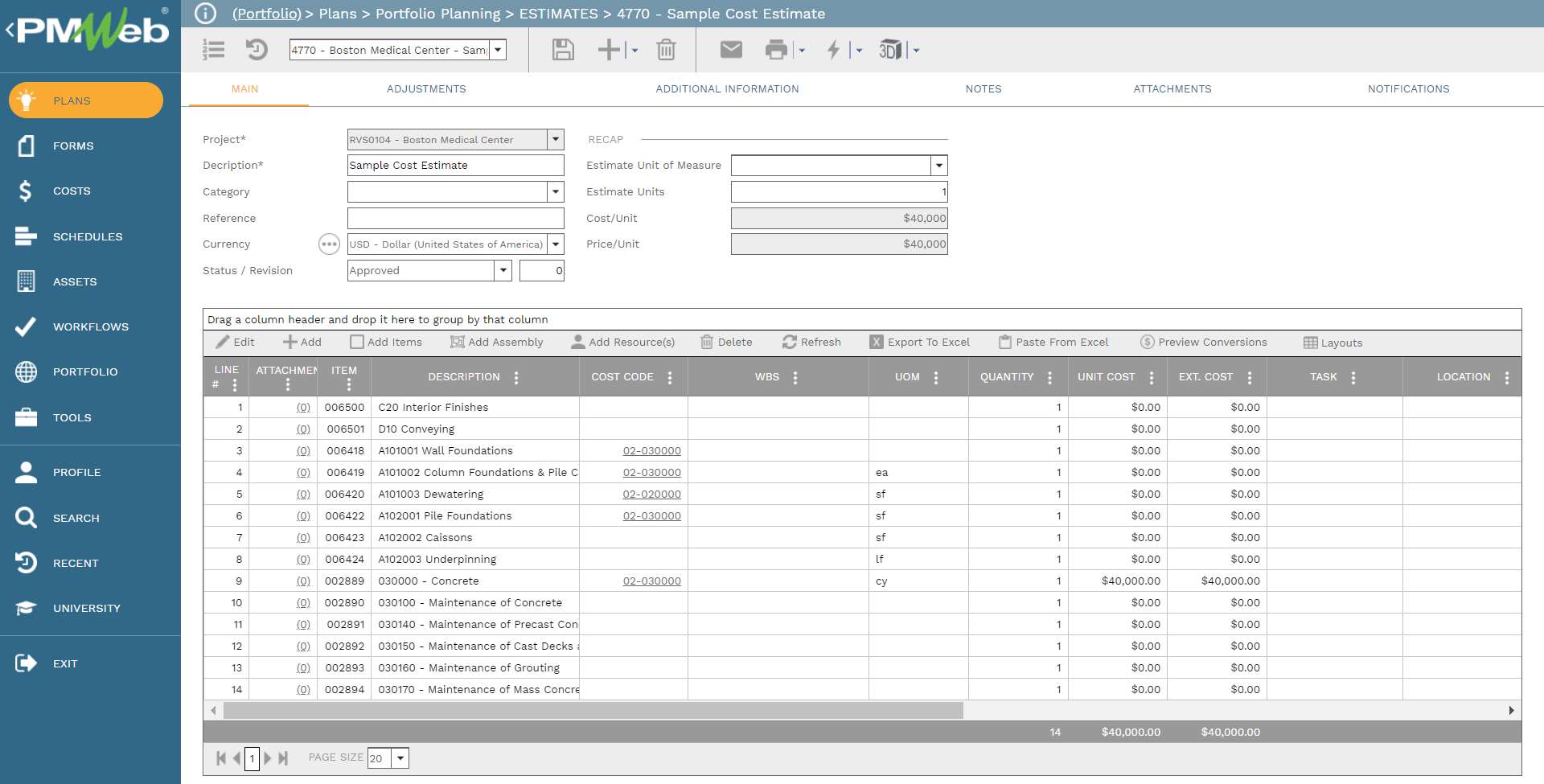
The PMWeb cost database can be imported into PMWeb by using the import command. The command details the fields that can be imported into the PMWeb cost database using MS Excel. PMWeb allows mapping the field names used in the MS Excel file into the cost database item fields used by PMWeb. This expedites creating the cost database using the organization’s past knowledge in delivering similar projects.
